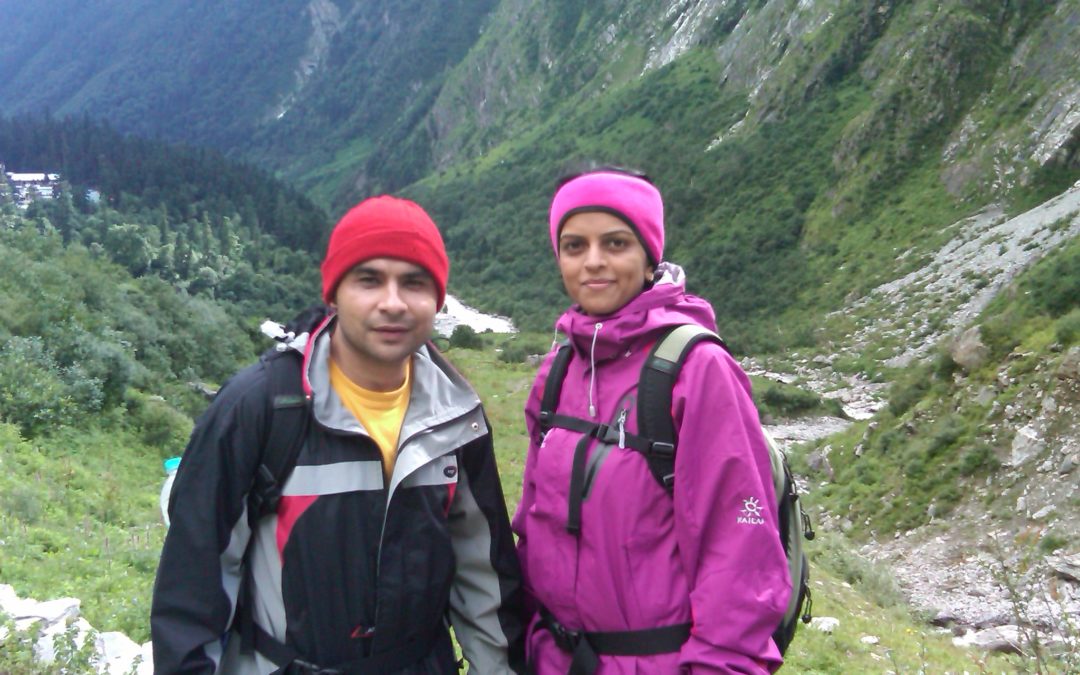We visited Uttarakhand in August 2012. I would say we were very lucky throughout the trip. No landslides obstructing our way to the valley as just the year after in 2013 there were massive landslides and floods in the same parts that we had travelled.
Uttarakhand often referred to as Devbhumi or Land of Gods is one of the most scenic states to travel in India. Besides being a home to important Hindu pilgrimage sites, the state also has many hillstations, National parks and lakes. It offers spiritual, and adventurous experiences. However, the mountains are very porous in this state and landslides are a common occurrence here. Another gem located here is the Valley of flowers or Byundar valley, a mesmerizing valley that comes to life with hundreds of colorful flowers in the months of July – September. Thankfully it can be reached only on foot or it would have been abused by hordes of tourists by now. However there is a helicopter service for a part of the stretch from where you can then go on foot.
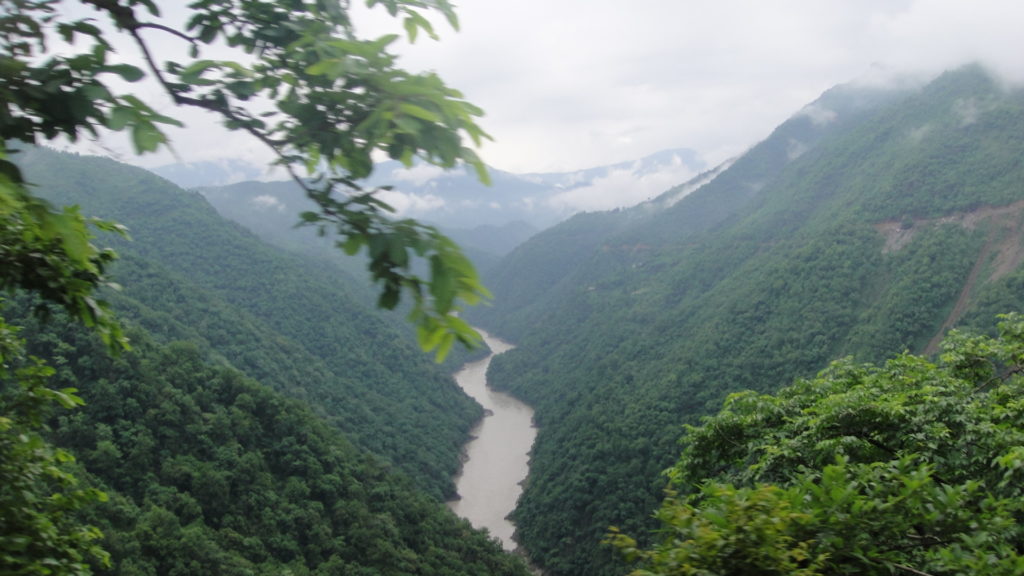
We had signed up with a trekking group called Yuvashakti for a 10 days trek and sightseeing trip – Valley of flowers trek, Hemkund saheb, Vasudhara falls trek, Joshimath, Badrinath, Haridwar, Rishikesh and Mussorie.
Here is my trip report:
Day 1: Mumbai – Haridwar
The journey started from Mumbai to Delhi via Rajdhani and there onwards to Haridwar via Janshatabdi. The timing between the trains is 6 hours apporximately. You can take one of the cheap rooms in hotels near the station to put your luggage and freshen up. We then moved around Delhi for a while before taking the train to Haridwar. We reached Haridwar at 9.00 pm. This was just a stop over and a 2 day stay was scheduled in Haridwar and Rishikesh on the way back.
Day 2 : Haridwar- Joshimath
Haridwar to Joshimath is a scenic route in Garhwal Himalayas and it passes through Rishikesh and ‘Panch Prayags – Dev Prayag, Rudra Prayag, Karna Prayag, Nanda Prayag and Vishnu Prayag‘ before reaching Joshimath. A Prayag signifies the confluence of holy rivers and have Many legends associated with them alongwith the enchanting beauty of mountains and valleys.

We started at 7.30 am from Haridwar and were greeted with breath taking views with Ganga gurgling with us by the side. After crossing Rishikesh we come across Dev Prayag – the first Prayag on the route. It is the intersection of Alaknanda and Bhagirathi rivers and they both meet to form Ganga which then . There is a legend saying this site is Vishnu’s navel and Rama vanished from here after attaining salvation. There is another legend of King Bali giving 3 feet of land. There is also a Rama temple which is said to be 1000 years old!
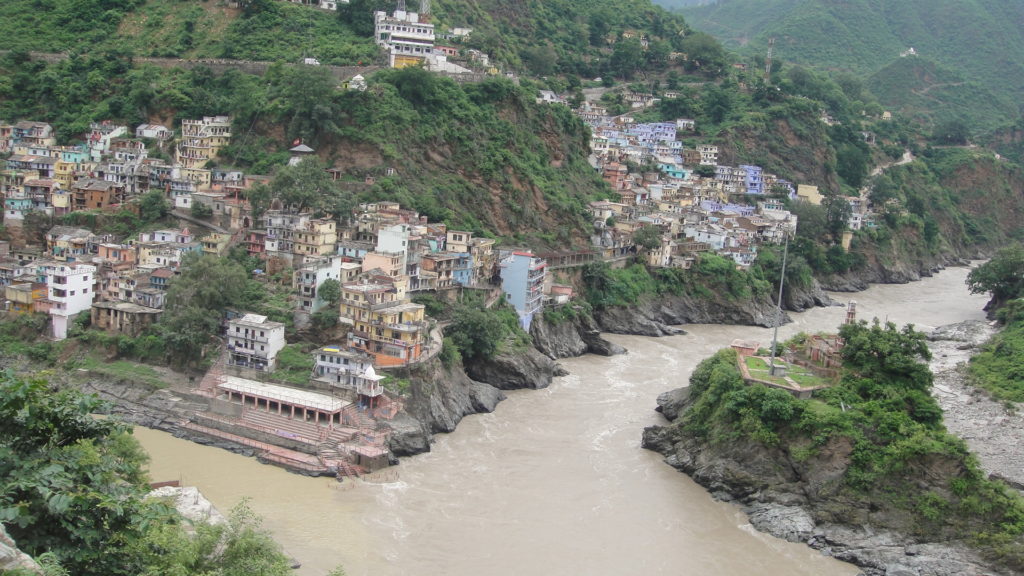
After a quick photo stop here we proceeded further and reached Rudra Prayag – the Prayag where Shiva did his Tandav and hence named after him. It is the confluence of Mandakini and Alaknanda rivers. Later we passed the remaining Prayags and reached Joshimath around 5 pm. Joshimath is home to the famous Shankaracharya Gufa and Kalpavriksha – the wishing granting tree. It is also the base to go to Auli – the ski resort in India.

Day 3 :Joshimath – Govindghat – Ghangaria
It was the time for our first trek. Valley of flowers trek starts from Govindghat – the last point of motorable road. Joshimath to Govindghat is about 20 km and one needs to enter the gates before 6.30 am. After reaching Govindghat we deposited our extra luggage at lockers near Gurudwara and carried a backpack and day haversack with only essentials for the 3 day trek. We loaded the mules with our main backpacks and started climbing with our daypack. Our destination was Ghangaria( 10200 ft) which was the base village for the trek around 14 km from Govindghat( 5500 ft). Ghangaria is the base village for Valley of flowers(5 km)and Hemkund Sahib(6 km).You can either walk or hire a horse on the route from Ghangria to Hemkund Sahib but Valley of flowers can be accessed only by foot. There is also an option to take the helicopter to Govindghat to Ghangaria. We explored this option on our way back.
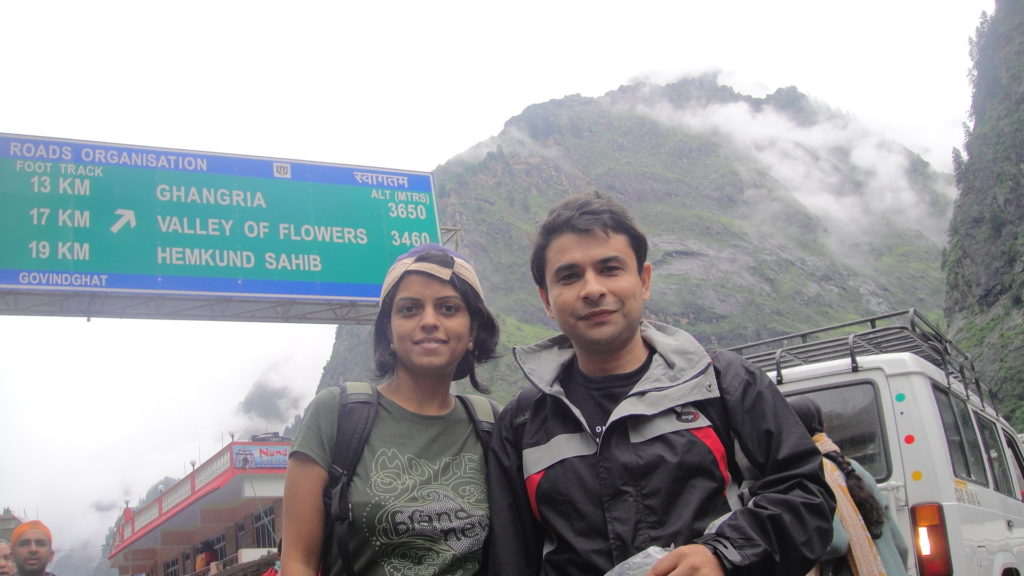
First 3 kms of the trek to Ghangaria is a quite steep and you gain altitude quickly. We left Govindghat behind in no time. The route is also the route which goes to Hemkund Saheb and you will find a few huts dispersed after every few km which have basic refreshments.

Since the steep section starts as soon as you start walking, it becomes a little exhausting and we took many breaks to catch our breaths.

After the first 3kms, the trail is almost flat walk for some time after which it gradually starts climbing upwards.

A section of the trek is along the the gurgling Laxman Ganga – a small river that flows through the Bhuyandar valley originating from Hemkund lake.

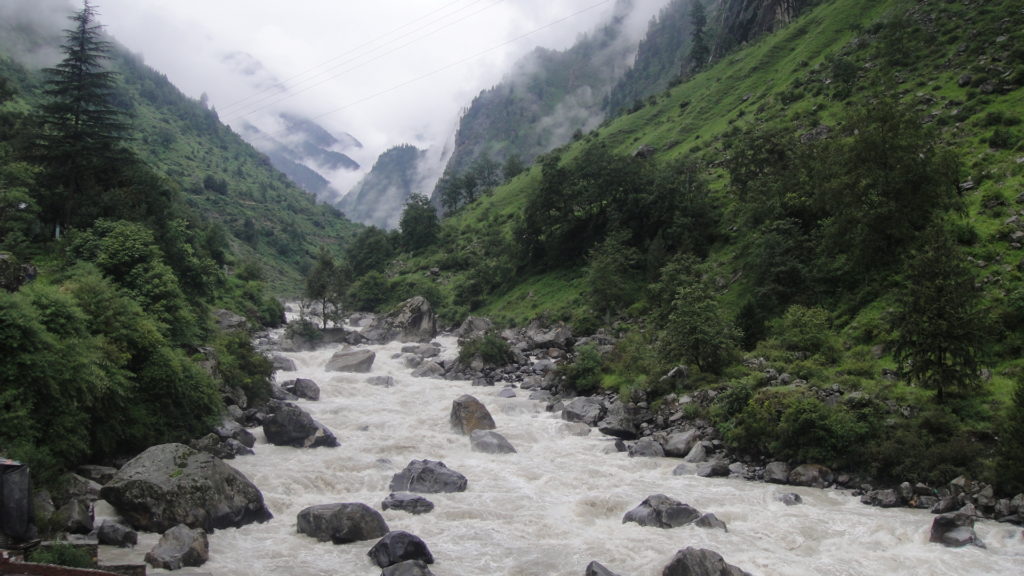
The middle section of the trek is a gentle uphill and downhill. You should keep stretching every 2 kms. There are cute bridges and sections where you can relax and rejuvenate. It would rain suddenly so I preferred walking with my poncho on all the time 🙂
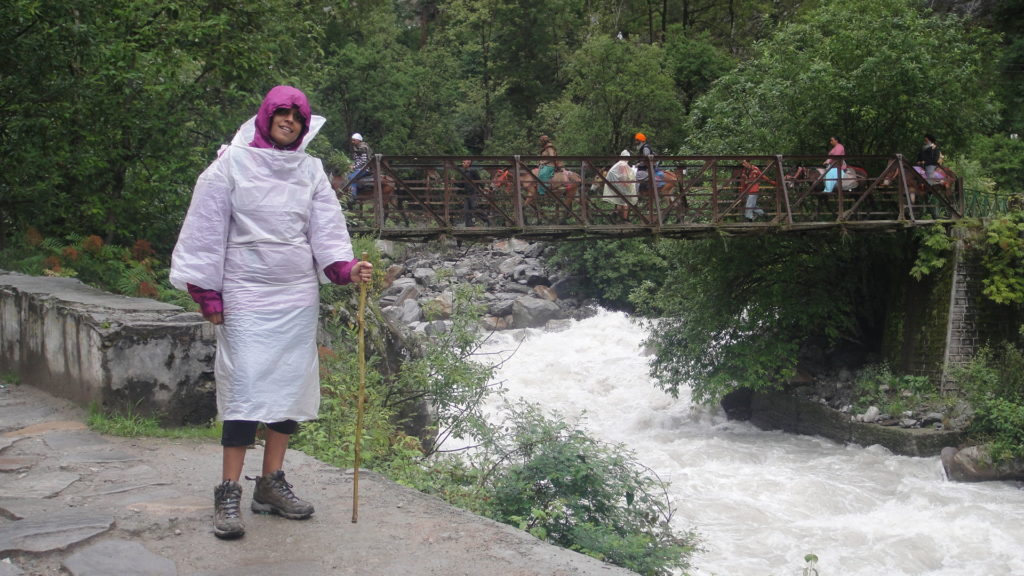
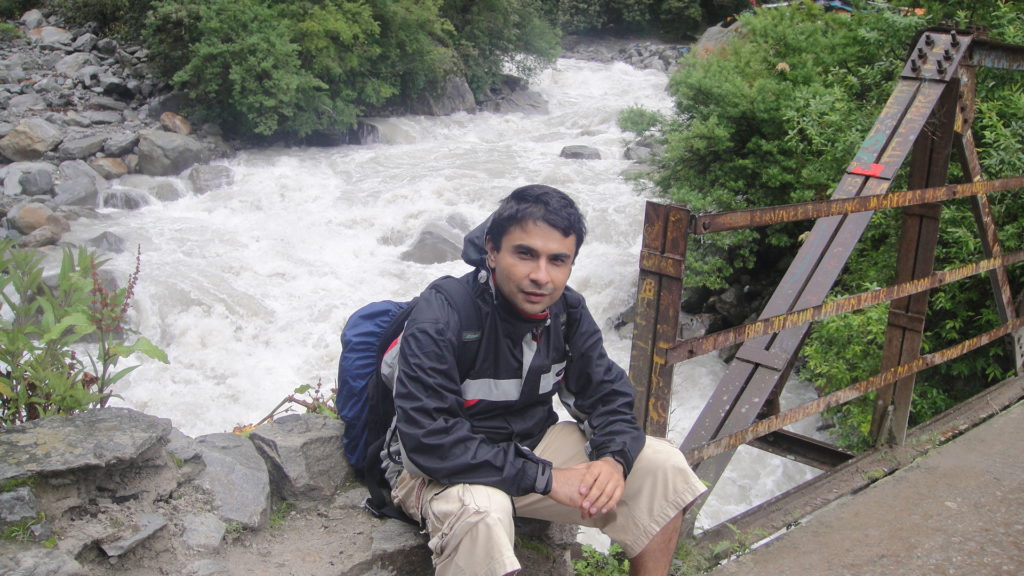
Laxman Ganga is very refreshing on the way and we walked at a leisurely pace clicking pics and enjoying the river. This stretch is the easiest to walk too. The last 3 kms of the trail are again steep and will need a lot of endurance. The duration we took to climb from Govindghat to Ghangaria was 7 hours at a leisurely pace clicking pics and enjoying in the river.
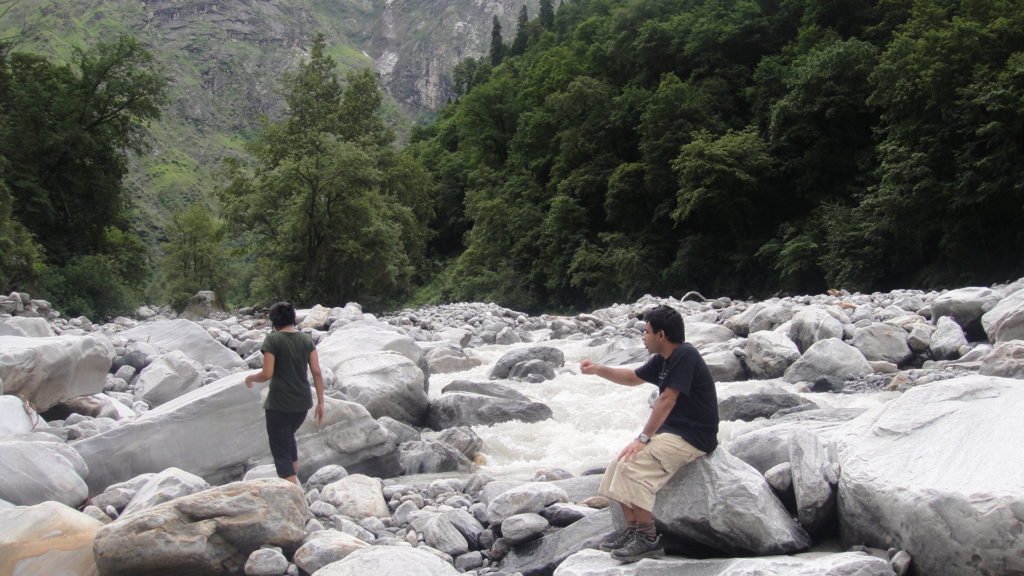

Finally we entered Ghangaria, a small mountain village in Uttarakhand at 10000 ft has so much potential for charming the socks off of tired ‘plain’ dwellers. Sadly, it falls far short of the mark, thanks to little shabby houses. What a sad state of affairs. However when we checked in our guest house Gangotri, we were greeted with fantastic views of towering mountains from the balcony outside the room.
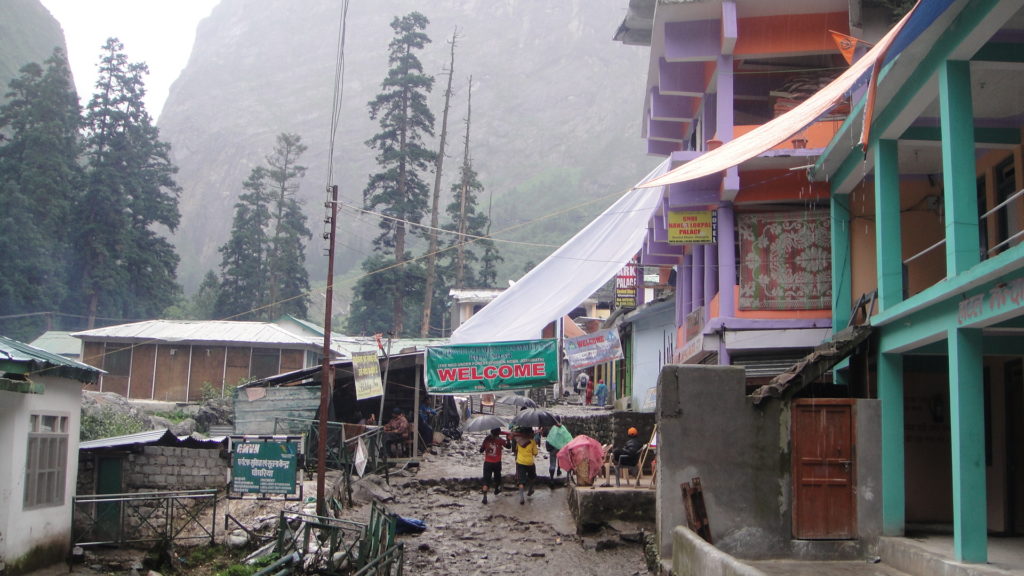

Day 4: Ghangaria – Byundar Valley(valley of flowers) – Ghangaria
Weather plays a very crucial role when you visit Uttarakhand and we couldn’t thank our stars enough for a super clear day that we got on the day we were supposed to visit the valley. We started for the valley at 6.00 am with our packed lunch and water. I was determined to walk through the entire valley of 8 km. ie after the main valley starts at 4km mark there is another 2km to Margaret stone and another 2 km to the mouth of river Pushpavati which is the end of the valley. All three men of my group had different orientations at the start of the trek. LOL.

We started walking with a guide named Raghuveer Chauhan. He was a very learned and experienced naturalist. He showed many flowers and explained their uses too. Few were used as antidotes to snake poison, few for nausea and also painkillers.
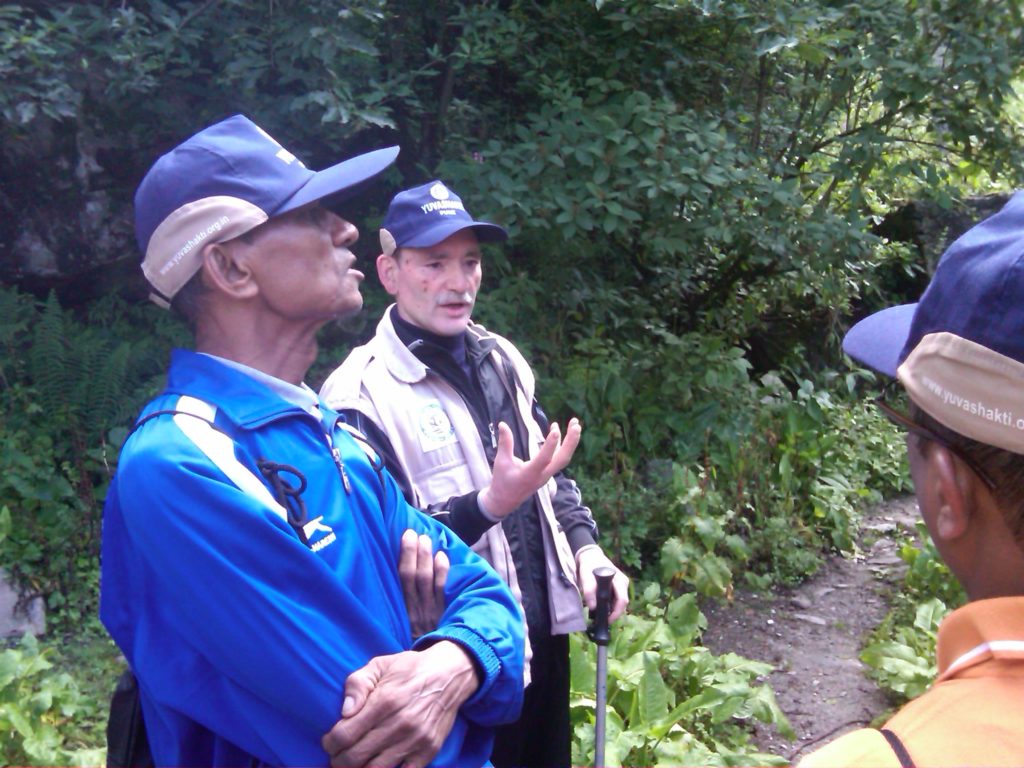
While walking in the valley he showed us an important medicinal berry which was a natural iodex – a painkiller. We even experimented by squeezing it and applying on stiff neck. It gave relief and made the area numb. The aroma was also identical. Nature doesn’t stop amazing me!
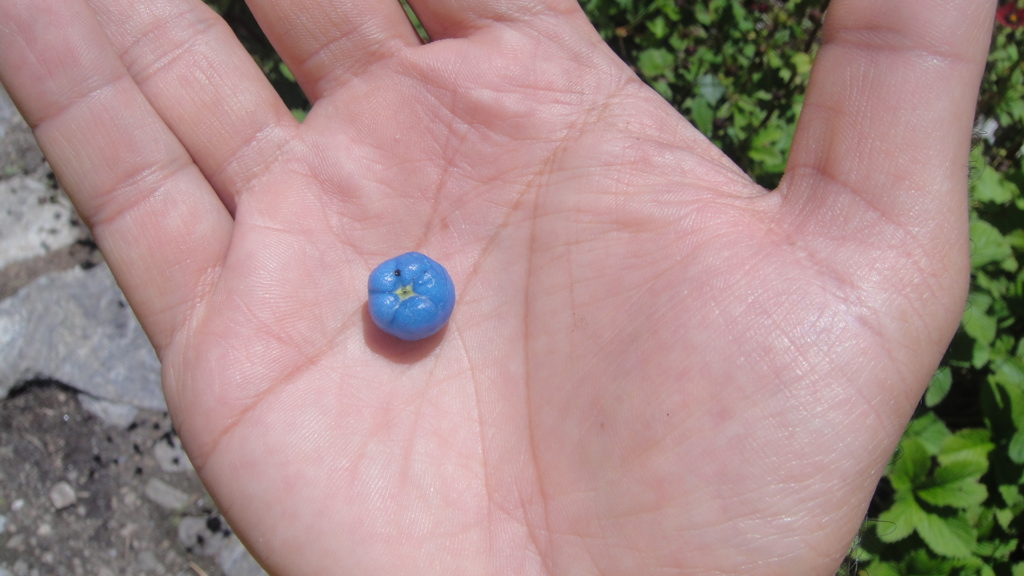
We started walking towards the valley. The first portion starts with a descent and then climbs up again crossing a mountain.

The walk started with a bridge crossing and then a descent followed by an uphill climb. After the gentle uphill climb we entered the valley. As soon as we entered the valley colors started streaming in. There were innumerous varieties of flowers in a single frame. Even the best of cameras wouldn’t be able to do justice to the sight you can see with the naked eye. There are so many different varieties of flowers that I would need a separate blog to cover all.
ALSO VIEW: Valley of flowers picture gallery

As we further walked in the valley there were small stream crossings and slowly beautiful vistas started opening up splashed in varieties of colors.
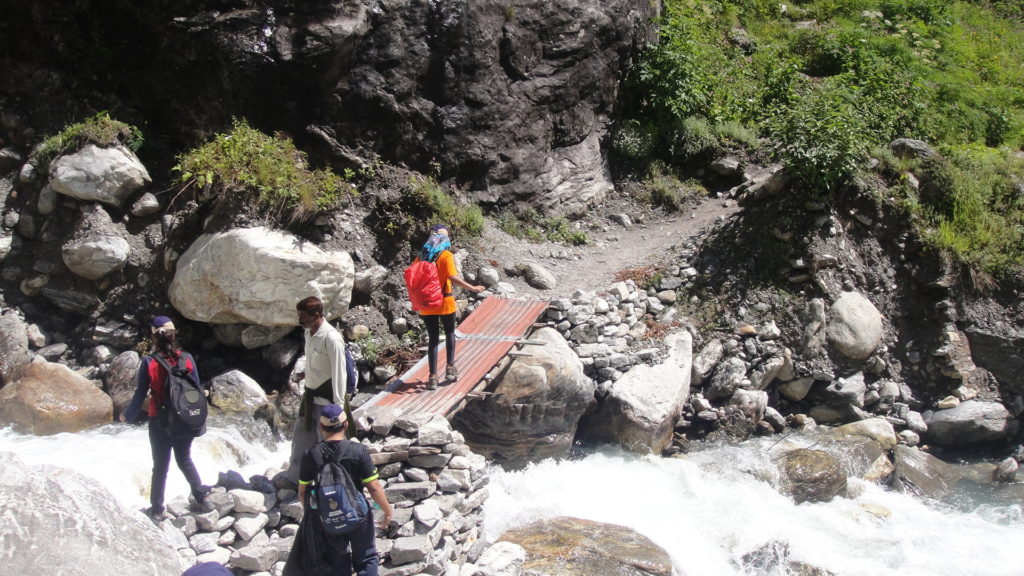
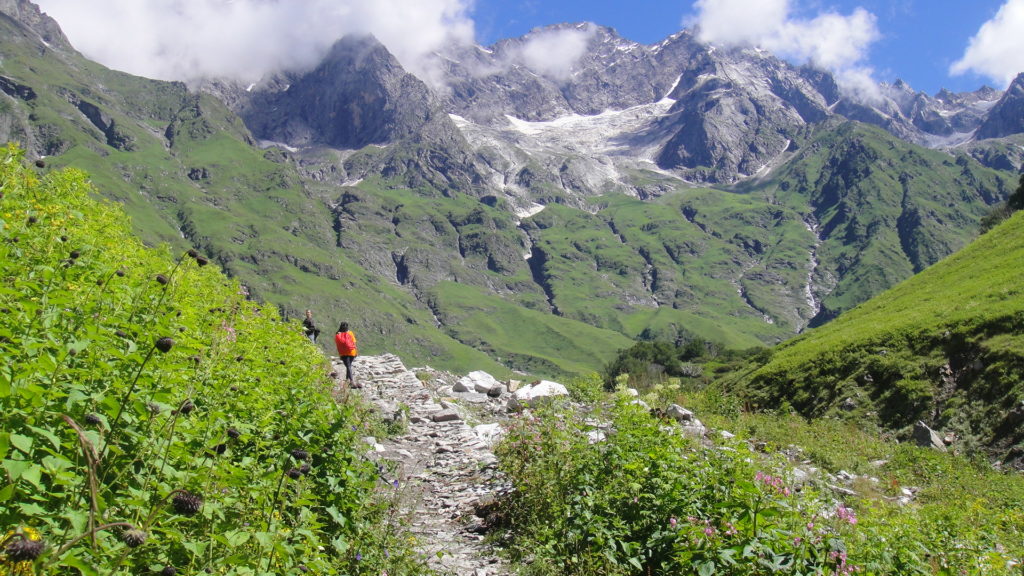


The Byundar valley then opens up with the majestic Rataban peak clad in snow. According to our guide not many would be able to see the peak so clearly. Luck !!! The sun was shining brightly and we got to enjoy the valley to the fullest.
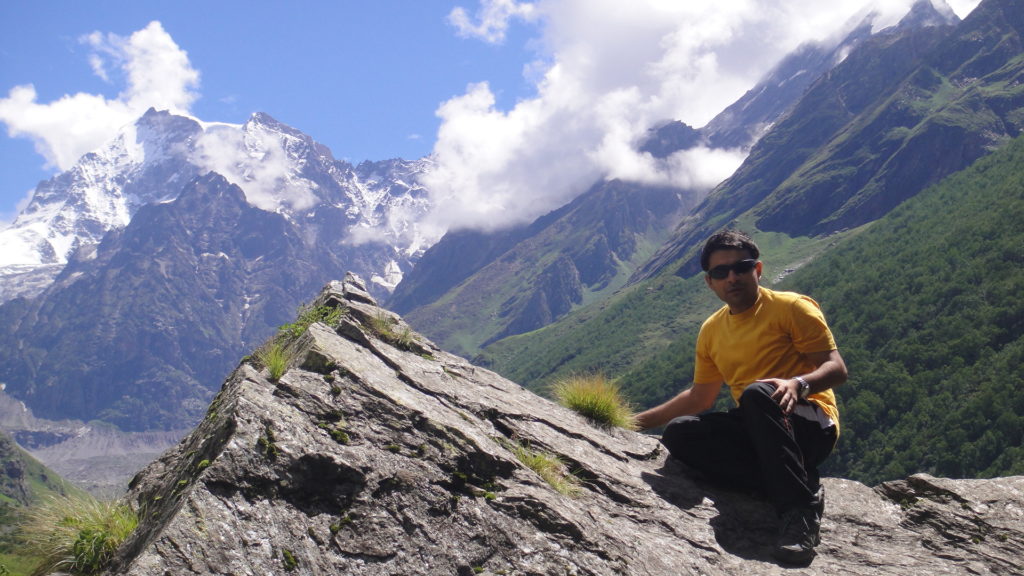
We unfurled the Indian tricolour and clicked group pics in the valley.

We spent a lot of time in the valley and after 2 pm the clouds strated coming in and gave an entirely different effect to the valley. Natural light plays a huge role in the experience of a place particularly in the mountains. A little cloudy weather gave a dramatic effect to the whole frame


We started walking back at 2.00 pm and reached Ghangaria around 5.00 pm at a leisurely pace. The remaining time is spent enjoying the views of towering mountains and just chit chatting with the local villagers over a cup of hot water 🙂

Day 5 : Ghangaria – Hemkunt Sahib(14500 ft) – Ghangaria
This was the third trekking day. After 2 days of walking almost 12 kms daily in the mountains, today we were supposed to trek the 6 km steep uphill climb for Hemkund Saheb. We started around 6.00 am and reached the top around 12.30. The first 4 km of the trek are a gentle uphill climb.


You will get a birds eye view of Ghangaria as you proceed further on the trail. Since this is also a Sikh Yatra you will find many other pilgrims and this won’t give you a wilderness trekking experience like valley of flowers. There are also few huts serving water and small snack to pilgrims. I personally also found the horses and mules annoying on the trail but then realized that that was the source of income for the locals in the season and also a support for people who couldn’t walk.

The exotic and rare ‘Brahma kamal’ (scientific name : Saussurea obvallata) flower which had many mythological legends attaches to it is found here. According to the locals, It is considered to be very lucky if you see it bloom as scientifically its said that it blooms only once a year after sunset from 7 pm and takes 2 hours to reach its full bloom.The flower holds a spiritual value and is offerd in Badrinath and Kedarnath. We were not so lucky to see it bloom, nevertheless lucky enough to spot it 🙂
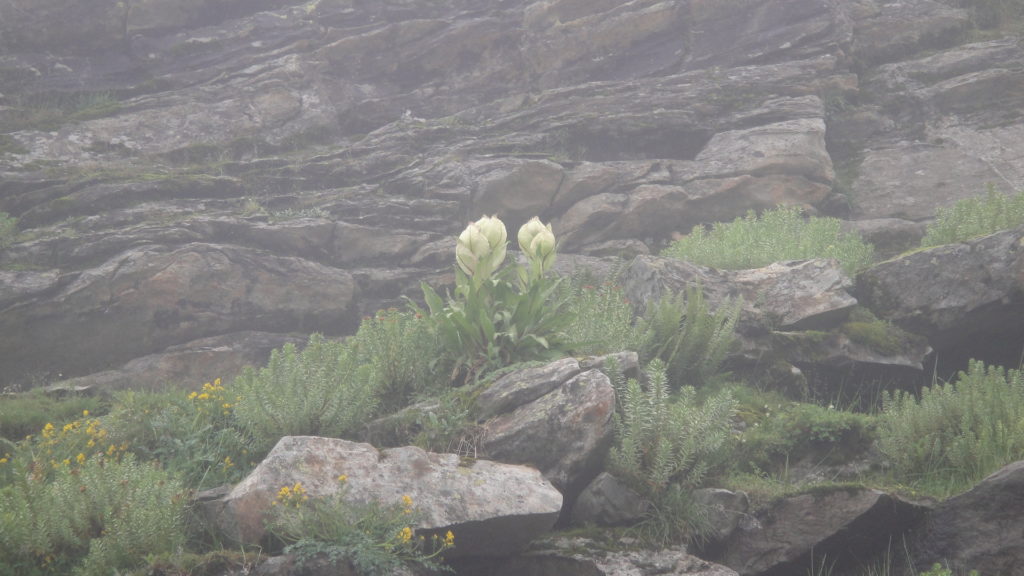
Along with Bhrahma kamal the trek to Hemkund is also adorned with my favorite light blue poppies. I fell in love with the color of these beauties.

While the route is scenic and you would enjoy trekking every bit here, the last 2 km are very difficult. I had some breathing problems while walking the last stretch. Once you reach the top there is Hemkund lake – source of Laxman Ganga, Gurudwara Hemkunt Sahib and a Lakshman temple.

Hemkund in Sanskrit means lake of snow( Hem – snow; Kund – lake). Its a beautiful lake surrounded by seven peaks. Prati and me take a dip in the icy cold lake.
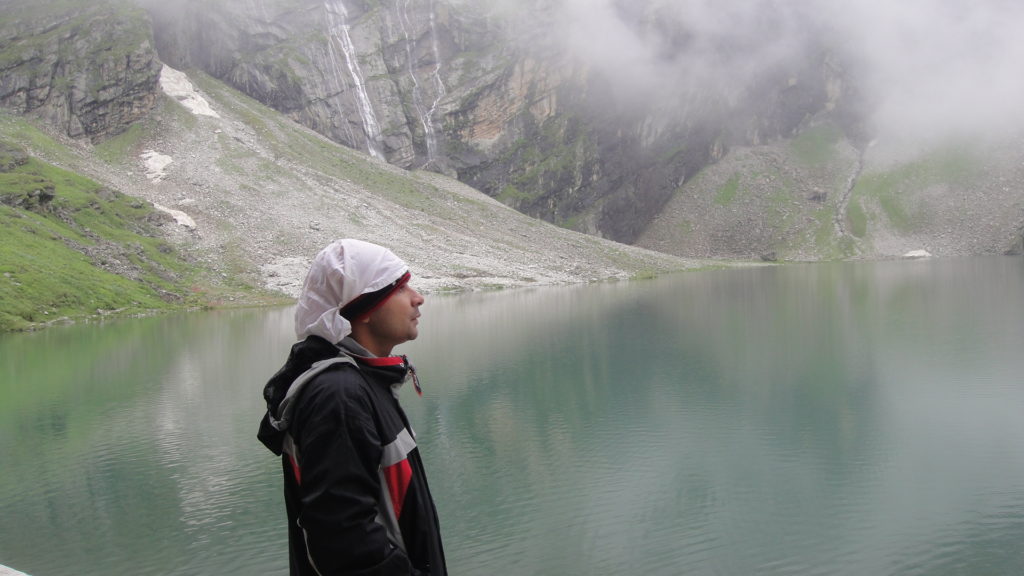
There is a Gurudwara by the lake devoted to Guru Gobind Singh Ji, the tenth sikh Guru. A holy dip in the lake is believed to cleanse you from your sins. All pilgrims are supposed to cleanse themselves in the lake before entering the Gurudwara for prayers. The men take a dip outside whereas there is a covered portion of the stream diverted for the ladies. The water is ice cold and a lot of people fill their bottles with this water to take back home for their folks. There is a langar where they serve hot khichdi to pilgrims.
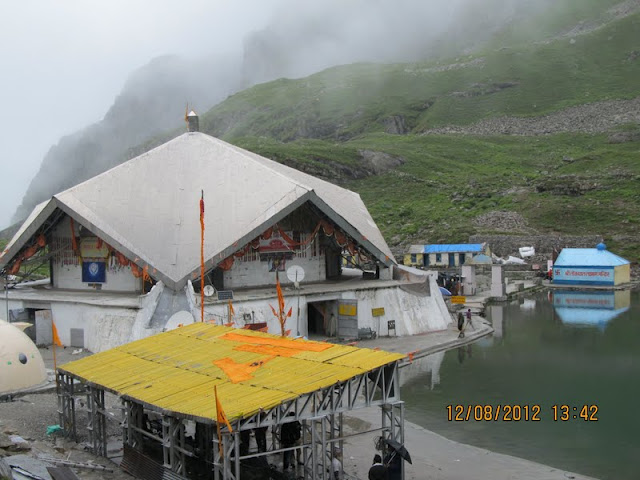
Prati takes in the plunge holding the metal chain.
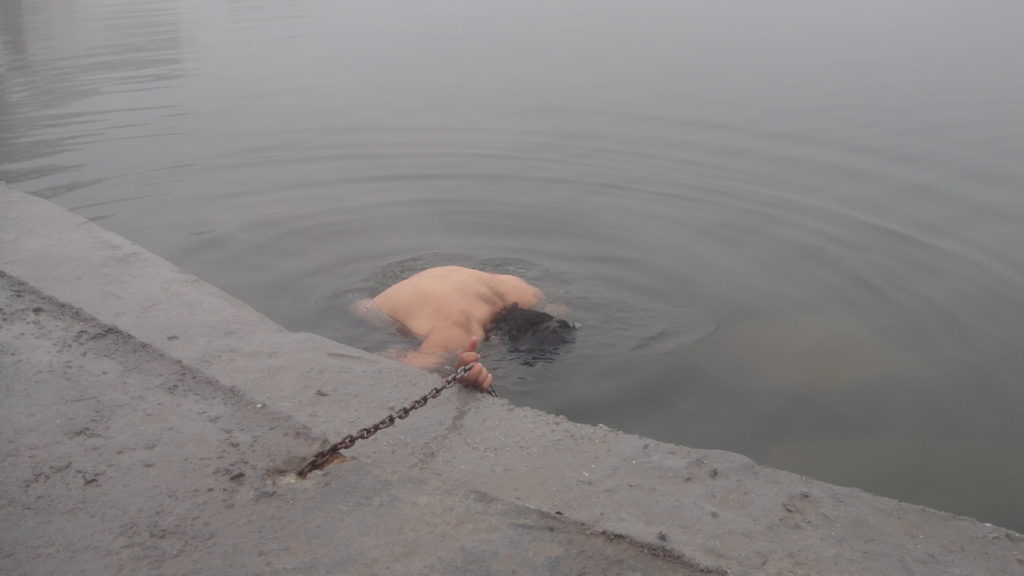
After spending some time in the Gurudwara we head for the Lakshman temple. It is believed that Lakshman regained his health after meditating here. The Hindu mythology have mention of this place in various other contexts in Mahabharata and Ramayana.
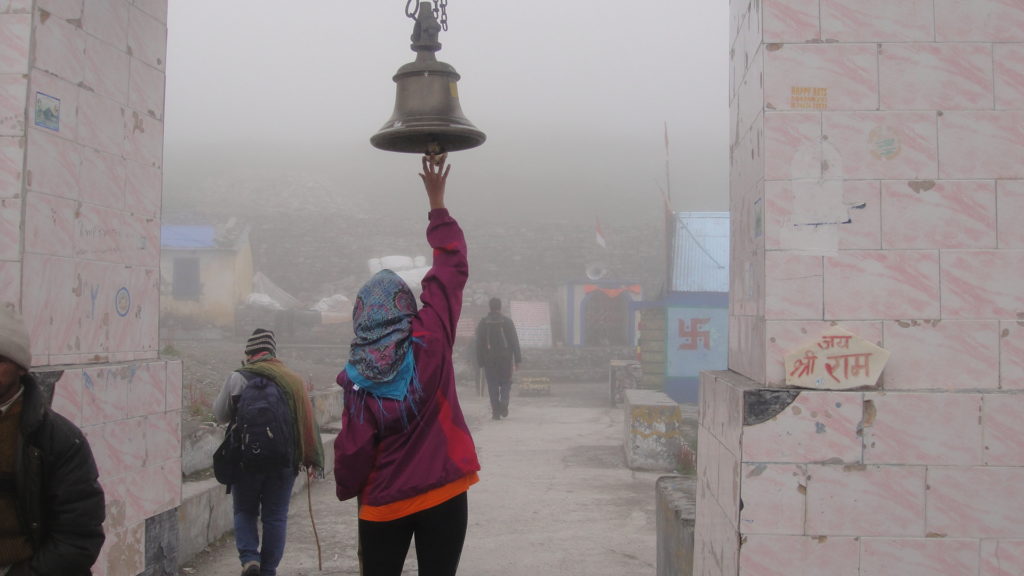
The descent down is pretty easy and most of the time we were quiet walking with our ownselves absorbing the wonderful experience that we had at the top. We reached Ghangaria around 5 pm.

Day 6: Ghangaria – Govindghat – Badrinath
There is an option to take a helicopter to and from Govindghat to Ghangaria. We had climbed while coming so decided to experience helicopter on the descent. Deccan operates helicopter service in the region subject to weather conditions. The trek took us 6 hours and the flight took 10 minutes. We had some fun time with pithus. Pithus are porters who have innovative backpacks where a person unable to walk for long hours sits and the porter carries him/her all the way up and down for pilgrimage. Well prati is my Pithu for life 🙂

Ghangaria helipad is among beautiful mountains and waterfalls whereas the Govindghat helipad is by the banks of the river.

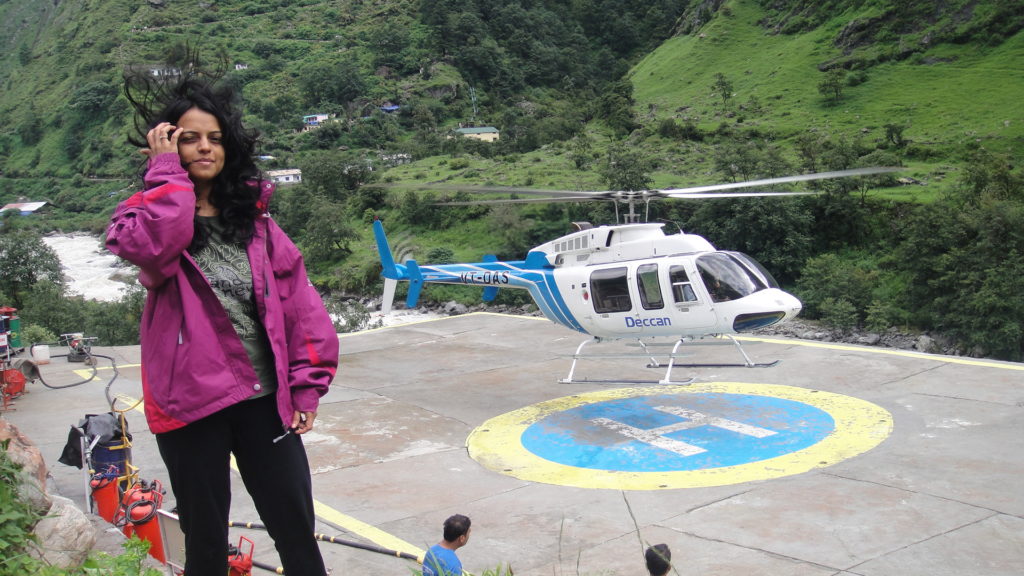
Our journey then followed to Badrinath through ultra narrow roads. It takes about an hour to reach Badrinath from Govindghat if all is well( no landslides). Badrinath is well known as one of the 4 temples in Char Dham yatra. It lies at an elevation of 3300m on the banks of roaring alaknanda river. The temple is devoted to Lord Vishnu and remains open from May – November. It is located between Nar and Narayan mountains and you can see imposing Neelkanth peak on clear sunny days.
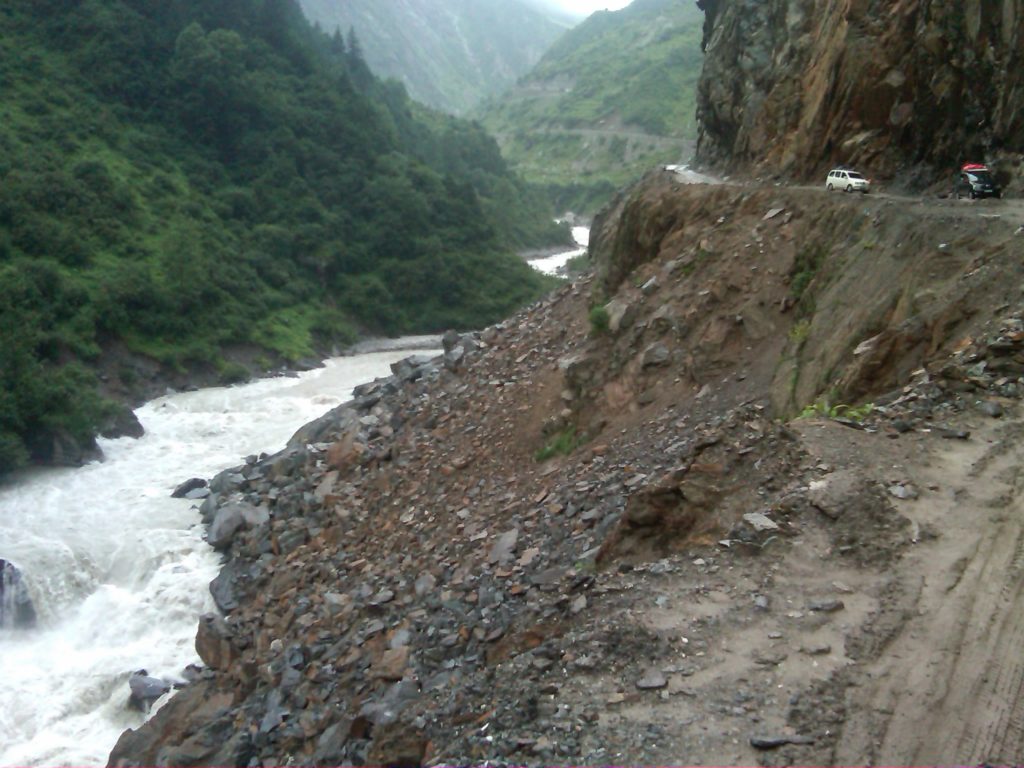

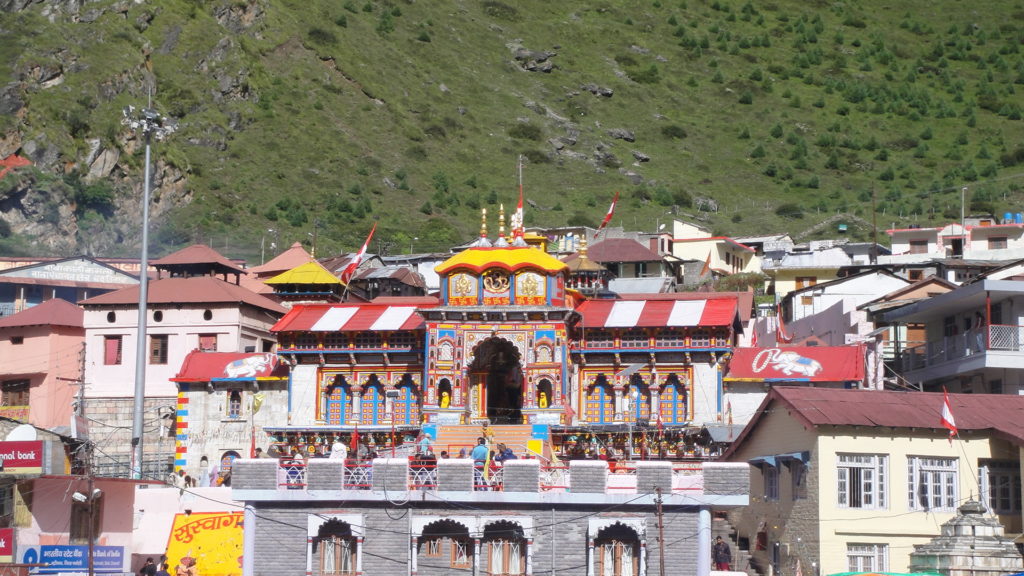

Badrinath also has sacred hot water springs known as Tapt Kund, Surya Kund and Narad Kund near the entrance of the temple. The temperature is around 45- 60 degree celcius and they are said to have healing properties. It is believed to be the abode of Lord Agni. Similar to Hemkund, it is customary to take a dip in the Kund before entering the temple. The hot dip was much more difficult than the icy cold dip at Hemkund and be careful not to stay for more than 5 minutes inside the springs to avoid dizziness. After a quick dip in the kund we visited the temple in the evening. Since we visited in August, there was no queue to the temple and there were only a few pilgrims. The rainy season has less crowd as there is fear of landslides. Well you lose some you gain some 🙂
Day 7: Badrinath – Mana village – Vasudhara falls trek – Badrinath
We left for Mana village at around 9 am to visit the attractions near the village and then go for Vasudhara falls trek. Mana village is around 4 km away from Badrinath and is the last village from the border of India and Tibet/ China. There is a small tea and coffee shop where they have written ” India’s last tea shop” in different regional languages of India.
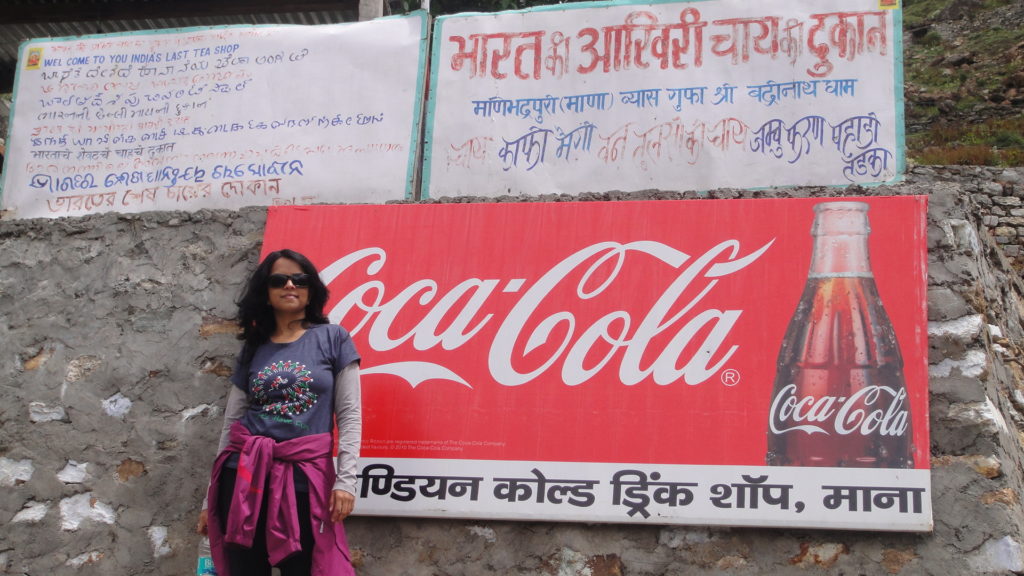
The mountains around Badrinath are mentioned in Mahabharata where Pandavas are said to have ended their life by ascending the peak called Swargarohini. Local legend says that Pandavas passed through Badrinath and the town of Mana on their way to Swarga( heaven). There are caves like Vyas gufa( Ved Vyas is believed to have composed in the 5000 year old cave, Ganesha Gufa( Lord Ganesha dictated Mahabharat to Ved vyas in this cave). Mana village is also home to Bhima pul ( bridge). It is believed that Bheem created this bridge by placing a huge rock across river Saraswati for Draupadi to cross during their journey to heaven.

Mana village is also the base for trek to Vasudhara falls (13,000 ft). The waterfall is remotely located and can be reached via an ardous trek. The trek starts from Mana village and passes by Saraswati river. The trail is filled with pebbles and stones and there are no shops on the trail so its advisable to carry some water and food. We started walking on the trail and within minutes we were greeted to stunning vistas.
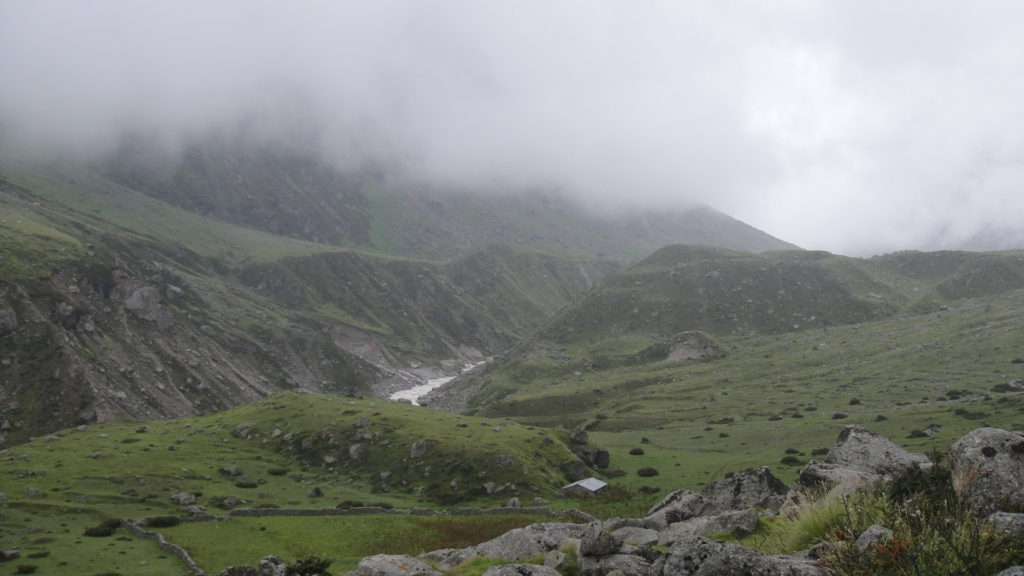
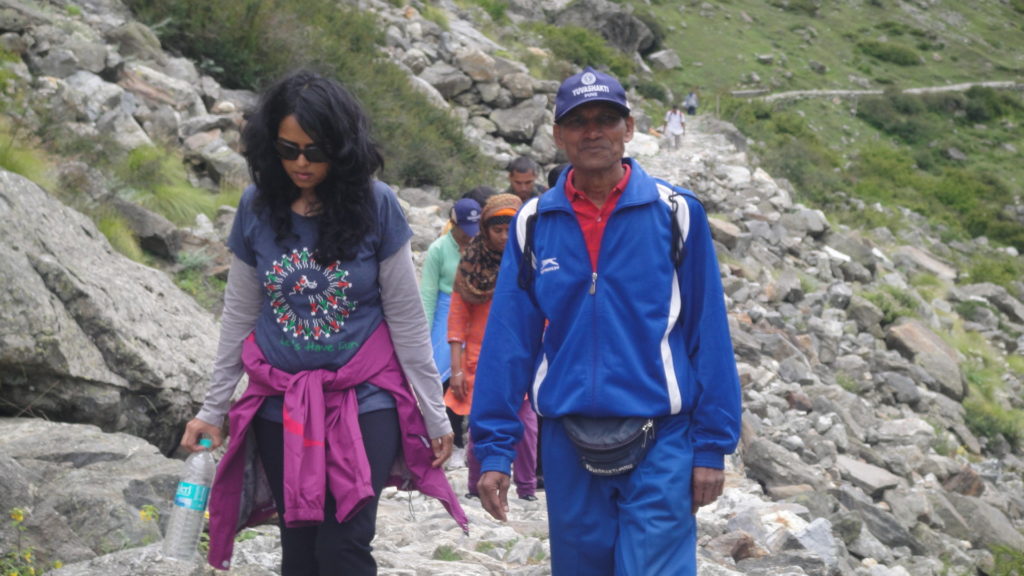
I prefer walking with the trek leader to get more insights on the region. The trail has 2-3 small stream crossings. According to the trek leader the time of the day is very important for these crossings as the water level rises. We experienced high water level on the way back. The flow is quite strong and we make human chains and cross the stream.

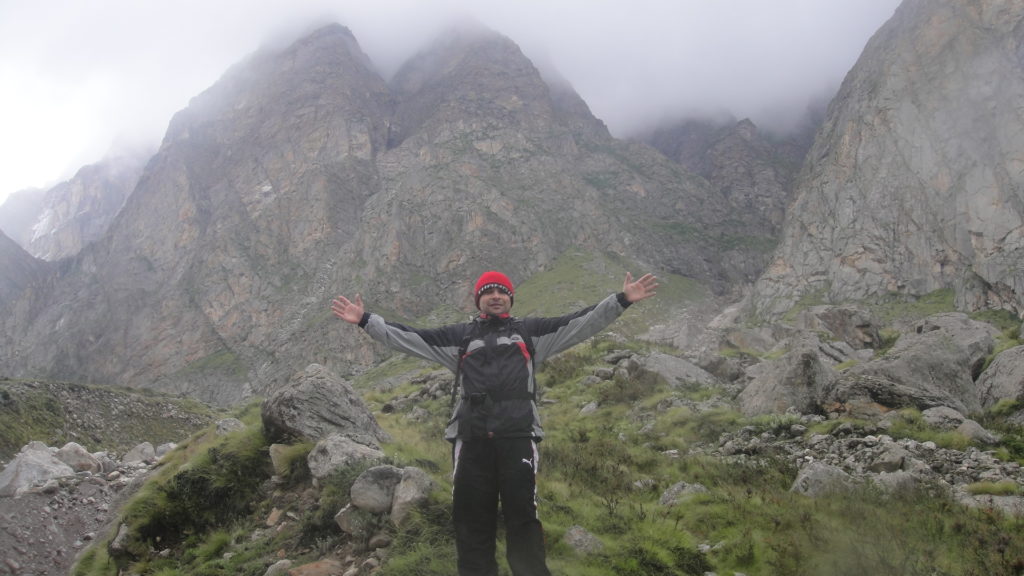
The trek becomes tough as we move further and walkway becomes very steep. Finally we reach the waterfall after about 2.5 hours. The first sight of Vasudhara falls is very overpowering as it falls majestically from a height of around 400 feet.
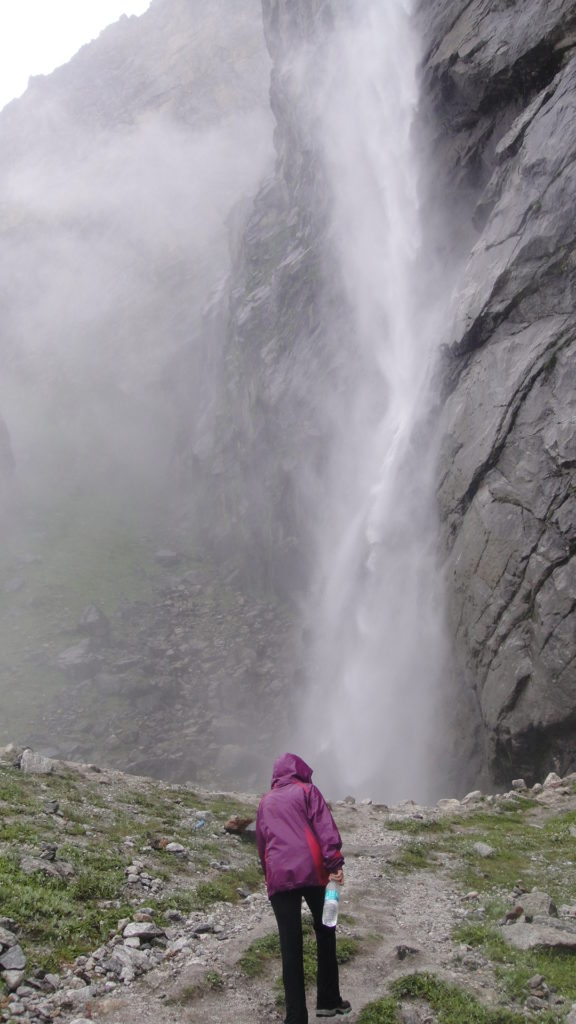
The adventurers that we are go ahead to stand under the falling water and obviously after that shivering experience sit in one corner to do yoga. LoL.
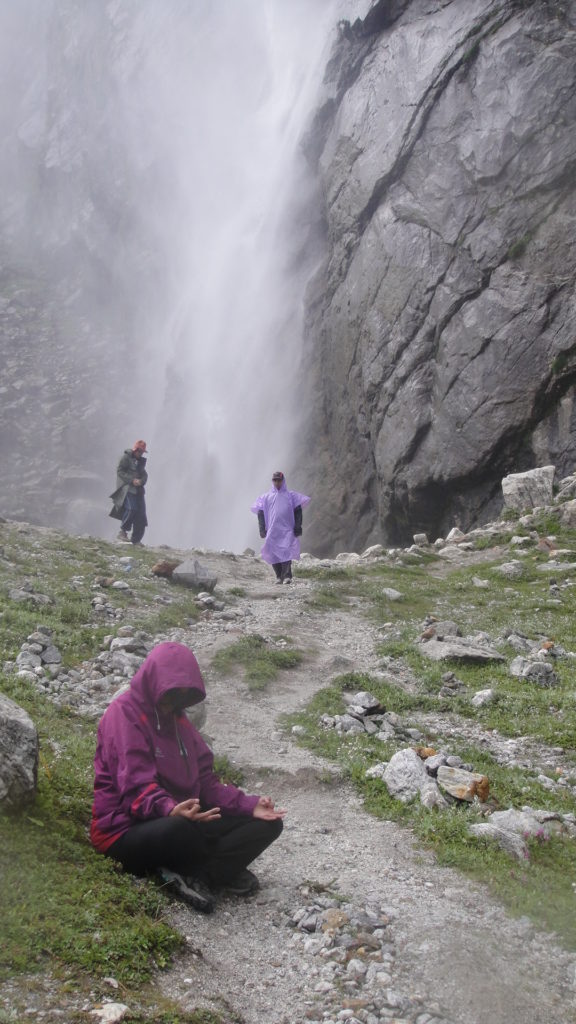
After spending some time here we quickly descend back to Mana village. I was literally running back to get a control over my shivering after the super cold head bath!

Day 8: Badrinath – Rishikesh
It was time to head back and we started around 10 am for Rishikesh. However this time lady luck was not so much by our side. We got stuck in a landslide and it took 5 hours before we could start again.
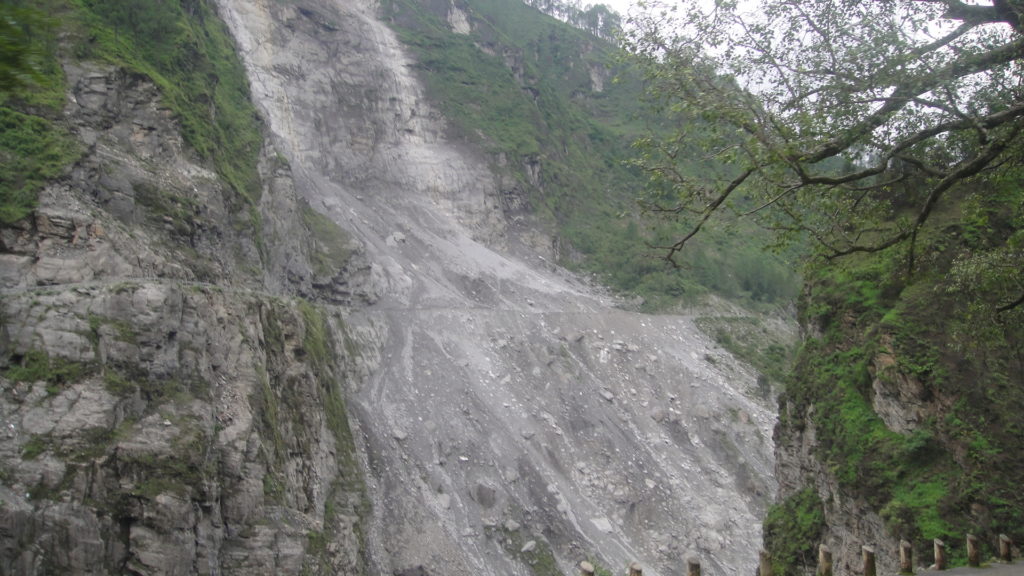
The roads looked really scary from the front seat of the bus! Phew! I was chanting all through the way.

The original plan was to stay in Rishikesh but because of landslide delay we stayed for an overnight in a guesthouse at karna prayag.We reached Karna Prayag. The experience of staying the night in Karna Prayag and going for a night walk in the mountains was also a memorable experience.
Day 9: Karna prayag – Rishikesh
We started early morning around 6.30 am for Rishikesh and reached Rishikesh around lunch time. The beauty of mountains in the morning was enchanting to a tired city soul.
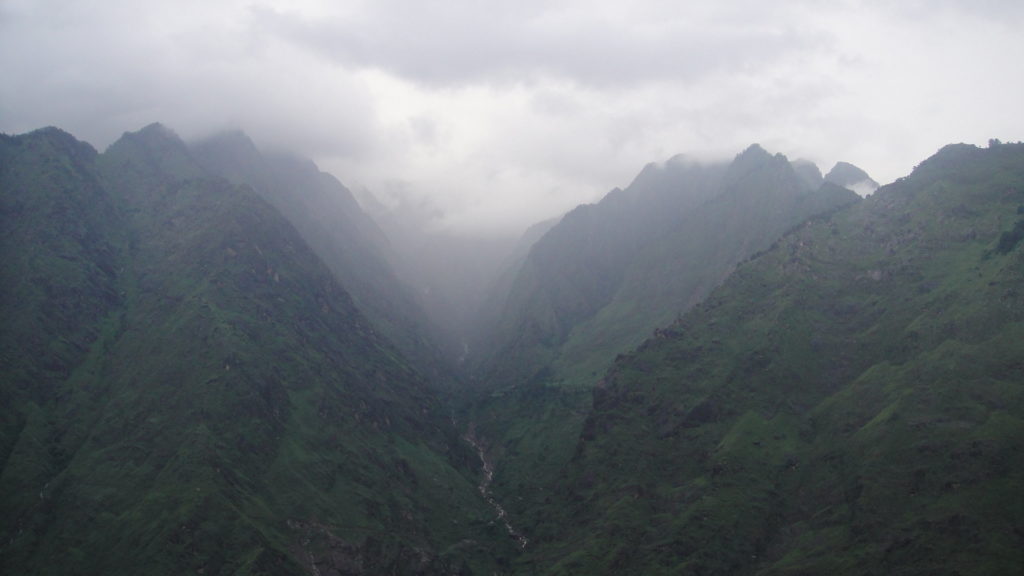
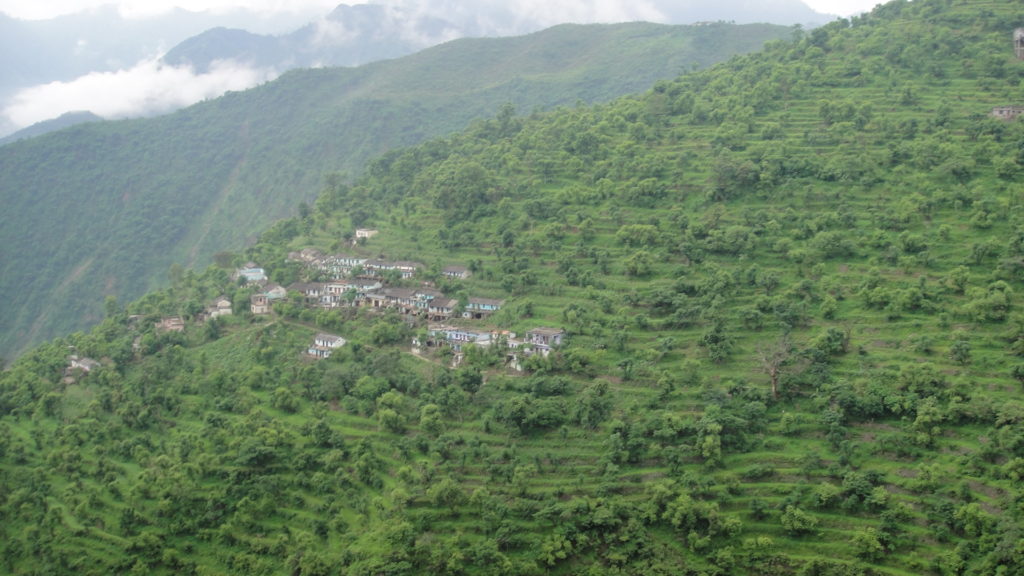
Rishikesh lies on the Himalayan foothills besides the Ganga river. It is renowned for temples and also ashrams and centres for learning yoga and meditation. It is now called the Yoga capital of the world alongwith being called the gateway to Char Dham. We visited different places in Rishikesh most famous being the two bridges known as Ram Jhoola and Lakshman Jhoola. They are suspension bridges and are called Jhoola meaning swing. Legend says that Lakshman crossed the Ganga using just 2 jute ropes and a bridge was built at the same place. Another bridge was built a few years later and was called Ram jhoola. We walked across the bridge and explored different areas of Rishikesh.
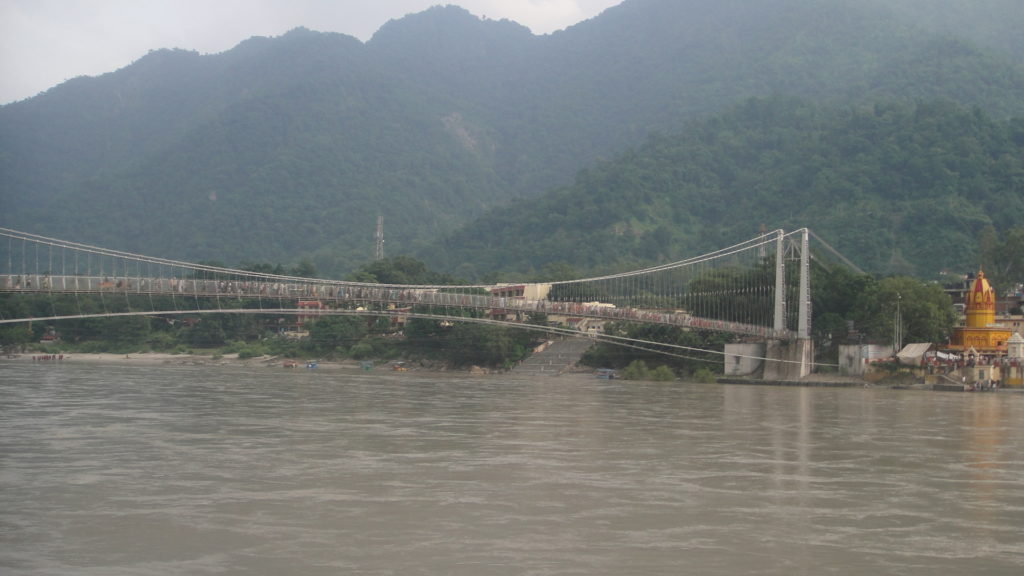
Day 10: Rishikesh – Mussoorie – Haridwar
This was the last day and we started early yet again at 6.30 am to leave for a quick trip to Mussoorie. Mussoorie is a hillstation tucked in the hills near Dehradun. It took around 3 hours to reach Mussorie and we explored the market area and Kempty falls. Kempty falls are three layered cascading falls with small pools at every level to enjoy.


We left Mussoorie and reached just in time for the evening aarti in Haridwar. The place was brimming with people and the whole atmosphere was charged up with loud chants of aarti being sung by the priests.

Day 11: Time to go home
It was time to go back home. We wanted to extend the trip in Mussoorie for a few days but alas!
TIPS for treks:
1.Do not carry a lot of rain gear as cheap use and throw rainwear is available at Govindghat.
2. Govindghat to Ghangaria trek and Hemkund Sahib trek has a few shops scattered along the route so u need not carry food. But for Valley of flowers and Vasudhara falls trek you will have to carry some food and water.
3. While climbing Hemkund Sahib keep a chewing gum in your mouth. It helps.
4. Breathe in 1 step, breathe out 2 steps.
Hope this helps … Enjoy your visit to Heaven !

